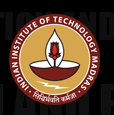


 |
 |
 |
ID7123: Classical Computer Vision | |
July - November, 2019 |
| Textbooks |
| Richard Szeliski, Computer Vision: Algorithms and Applications, Springer-Verlag London Limited 2011. |
|
Computer Vision: A Modern Approach, D. A. Forsyth, J. Ponce, Pearson Education, 2003. |
|
|
| References |
| Richard Hartley and Andrew Zisserman, Multiple View Geometry in Computer Vision, Second Edition, Cambridge University Press, March 2004. |
| K. Fukunaga; Introduction to Statistical Pattern Recognition, Second Edition, Academic Press, Morgan Kaufmann, 1990. |
| R.C. Gonzalez and R.E. Woods, Digital Image Processing, Addison- Wesley, 1992. |
|
|
| Journals |
| IEEE-T-PAMI (IEEE Transactions on Pattern Analysis and Machine Intelligence). |
| IJCV (International Journal of Computer Vision) - Springer. |
|
|
Tracking Videos
![]()